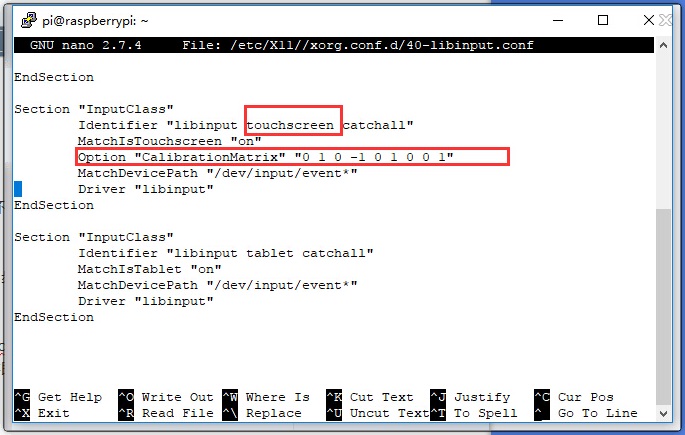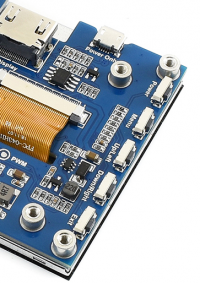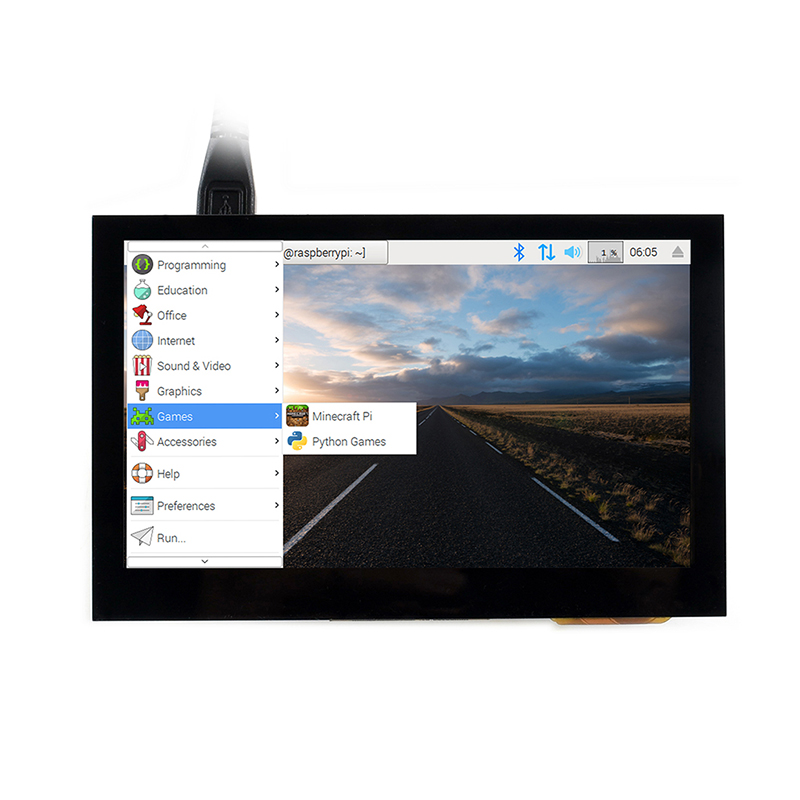- sales/support
Google Chat: zj734465502@gmail.com
- sales
+86-0755-88291180
- sales01
sales@spotpear.com
- sales02
dragon_manager@163.com
- support
tech-support@spotpear.com
- CEO-Complaints
zhoujie@spotpear.com
- sales/support
WhatsApp:13246739196
Raspberry Pi 4.3inch HDMI LCD (B) User Guide
Introduction
4.3inch, 800x480, Capacitive Touch Screen LCD, HDMI interface, Supports Multi mini-PCs, Multi Systems
Features
- IPS screen, 800x480 hardware resolution, configurable by software (up to 1920 x 1080)
- Supports popular mini PCs such as Raspberry Pi, BB Black, Banana Pi, as well as general desktop computers
- When works with Raspberry Pi, supports Raspbian/Ubuntu/Kali/Retropie/WIN10 IOT, driver free
- When work as a computer monitor, supports Windows 10/8.1/8/7, five-points touch, and driver free
- Multi languages OSD menu, for power management, brightness/contrast adjustment, etc.
- 3.5mm audio jack, speaker connector, supports HDMI audio output
How to use
Working with Windows PC
- Turn on the backlight switch on the backside of LCD
- Connect Touch interface of LCD to USB port of PC
- Connect HDMI (Display) interface of LCD to HDMI port of PC
- Connect earphone to HP interface or 8Ω 5W Speaker to Speaker interface of LCD if audio output is required.
- Hot-Plug isn't supported by some PC, you can try to restart if LCD doesn't display after connecting
Working with Raspberry Pi
- Download lastest Raspbian image from Raspberry Pi website
- Write the image to SD card. (refer to RPi Image Install about how to write image)
- After writing, open and modify the /boot/config.txt file, which located at root directory (BOOT) of SD card, append these lines to config.txt file
max_usb_current=1 hdmi_group=2 hdmi_mode=87 hdmi_cvt 800 480 60 6 0 0 0
- 【Note】There should not be spaces in both sides of equal-sign.
- If the LCD cannot work with statements above when working with Pi 4, you can comment/remove statement dtoverlay=cv4-fkms-V3D on config.txt file and try again.
- Connect Touch interface of LCD to USB port of Raspberry Pi
- Connect HDMI interface of LCD to HDMI port of Raspberry Pi
Configure orientation (Raspberry Pi)
- Display rotate
Add line below to /boot/config.txt file
display_rotate=1 #1:90; 2: 180; 3: 270
Save and reboot
sudo reboot
- Touch rotate
Raspbian doesn't support touchscreen rotate as display, therefore, we need to rotate touch separately.
- Install libinput
sudo apt-get install xserver-xorg-input-libinput
- Create xorg,conf.d directory
sudo mkdir /etc/X11/xorg.conf.d
- Copy 40-libinput-config file to the folder created
sudo cp /usr/share/X11/xorg.conf.d/40-libinput /etc/X11/xorg.conf.d/
- Append setting statements to 40-libinput-conf file
sudo nano /etc/X11/xorg.conf.d/40-libinput.conf

【Note】
- 90 degree: Option "CalibrationMatrix" "0 1 0 -1 0 1 0 0 1"
- 180 degree: Option "CalibrationMatrix" "-1 0 1 0 -1 1 0 0 1"
- 270 degree: Option "CalibrationMatrix" "0 -1 1 1 0 0 0 0 1"
- Save and reboot
Keys
- Power: Open/Close LCD display (backlight)
- Menu: Open menu/OK
- Up/Left: Direction
- Down/Right: Direction
- Exit: Return/Exit
TAG:
JETSON NANO MINI
Raspberry Pi UART
Raspberry Pi 5
Raspberry Pi PICO
i5-1135G7
RM520N GL 5G/4G/3G M.2 Moudle IoT EMBB For LTE-A/NSA/SA And GNSS For DFOTA /VoLTE For Quectel
Raspberry Pi 5 PCIe to M.2 NVMe SSD Adapter Board C HAT Pi5-PCIe-2280-2242-2230
IMX462
1.38MP Global Shutter Camera ISG1321 For Luckfox Pico Zero
USB-CAN-B
EoAT Setting
Raspberry Pi 8 inch DSI LCD Display With 5MP Front Camera MIPI 800×480 Capacitive TouchScreen
Raspberry Pi 5 SSD
Install Espressif IDF Plugin Tutorial User Guide
NV3030B
Pi5-Pcie-Fish-Boar
OLED-LCD-HAT-A user guide
SpotPear
Raspberry Pi RTC WatchDog HAT (B)
Raspberry Pi OpenWrt Tutorial 1
TAG:
ESP32-S3 Display
Digital Photo Frames
ESP32 Thermal imaging
16mm Telephoto Lens Raspberry Pi High Quality Camera Global Shutter
3.5 inch LCD
Raspberry Pi 5 Industrial Case
Raspberry Pi LCD 3D Display Transparent Screen Refractive Prism Game Mini TV For Raspberry Pi Zero
Luckfox Lyra Pi RK3506
Raspberry Pi 5 PCIe M.2 NVMe SSD Pi5 mini
Raspberry Pi 15.6 inch FHD Monitor LCD Capacitive TouchScreen Display Type-C HDMI Computer PC
SIM7600G H Mini PCIe SIMCom 4G LTE Cat-4 Global GNSS
2.8inch USB Monitor Screen
Raspberry Pi Pico GNSS expansion board L76K GPS Beidou (BDS) GLONASS QZSS A-GNSS For RP2040/RP2350
Raspberry Pi 9inch DSI MIPI LCD TouchScreen Display 9inch 720x1280 For Luckfox Lyra RK3506/ESP32-P4/Luckfox Omni3576
GC9107
ESP32 C3
SpotPear
Raspberry Pi Real time clock
Raspberry Pi GPS GNSS Expansion Board L76K Beidou (BDS) GLONASS QZSS A-GNSS Also For Jeston
Raspberry Pi 1.3inch LCD





